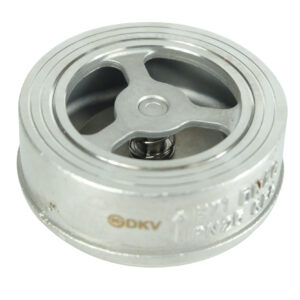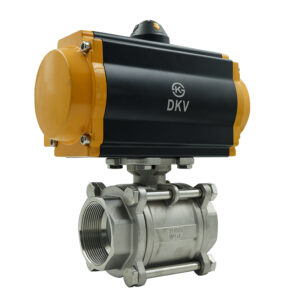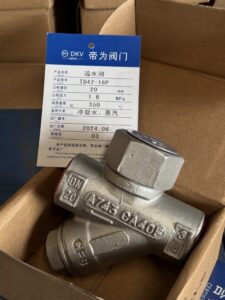
What Is a Check Valve and How Does It Work?
What Is a Check Valve and How Does It Work? Introduction — Why Check Valves Matter in Industrial Systems In every pipeline system, fluid needs
In industrial piping systems, valve selection directly impacts system performance, maintenance, and project cost.
While gate valves are often used for on/off flow control, globe valves offer distinct advantages that make them the preferred choice in many applications.
This article explores why engineers and procurement managers should consider globe valves over gate valves, highlighting technical features, performance benefits, and practical case studies.
Quick takeaway: Choose globe valves when precise flow control, throttling capability, and reliable shut-off are required, especially in process industries like chemical, water treatment, and power generation.
Gate valves are linear motion valves that use a wedge-shaped gate to start or stop flow.
They are ideal for full open or full close applications but are limited in precise flow regulation.
Globe valves, in contrast, have a spherical body and a movable plug or disc perpendicular to the flow path, allowing fine control over flow rate.
According to ASME B16.34 standards, globe valves offer superior sealing and throttling performance, making them suitable for high-pressure, high-temperature, and corrosive applications.
Globe valve vs gate valve: flow path and internal structure comparison
Engineer’s tip: Always review the valve’s flow coefficient (Cv) to ensure the correct sizing for precise flow control.
A globe valve regulates flow using a disc that moves perpendicular to the seat.
The disc is attached to a stem that passes through a threaded yoke or packing box. Turning the handwheel or actuator raises or lowers the disc, controlling the flow rate.
Many globe valves feature split body, bolted bonnet designs for easy maintenance and stainless steel or bronze seating for durability.
Procurement tip: Ensure proper packing and stem design to minimize leakage and maintain long-term reliability.
Example: A chemical plant replaced several gate valves with globe valves on a throttling line, achieving accurate flow control and reducing downstream pump cavitation by 15%.



Case insight: In a wastewater treatment plant, globe valves replaced gate valves on recirculation loops, improving flow accuracy and reducing energy costs by 10%.
Globe valves are commonly made from carbon steel, stainless steel (304/316), depending on pressure, temperature, and media.
Seat materials vary between metal (for high temperature/pressure) and soft elastomers (for chemical compatibility).
Body types include straight-through, angle, and three-way designs for specific piping configurations.
Expert tip: Select body and seat material that meets CE, ISO, or API standards for compliance and reliability.
Engineering tip: Proper valve alignment and torque settings prevent premature wear and ensure consistent performance.
When choosing between globe and gate valves, consider:
Procurement reminder: Always evaluate pressure rating, temperature limits, material compatibility, and valve sizing according to ASME/ANSI or ISO standards.
A refinery upgraded its chemical feed lines from gate valves to globe valves. The outcome:
Lesson learned: selecting the right valve for throttlin
Looking for reliable globe valves for industrial applications?
DKV Valve offers CE and ISO-certified globe valves suitable for high-pressure, high-temperature, and chemical processes.
Contact us today to request technical datasheets, pricing, or a customized quote for your project.
Fill out the form below and we will contact you as soon as possible!

What Is a Check Valve and How Does It Work? Introduction — Why Check Valves Matter in Industrial Systems In every pipeline system, fluid needs

What Is a Pneumatic Valve ? In modern industries, the performance of a valve often determines the efficiency, reliability, and safety of a process system.Pneumatic

What Is a Steam Trap & How Does It Work? Introduction — The Hidden Hero in Steam Systems In every industrial steam system — whether

Why Use a Globe Valve Instead of a Gate Valve? A Practical Guide for Engineers & Procurement Managers Introduction — Making the Right Valve Choice

What Is the Main Advantage of a Butterfly Valve? Introduction — why this question matters When you plan an industrial piping system, valve selection affects

Electric Valves: Comprehensive Guide for Industrial Applications In modern industrial automation, electric valves play a critical role in regulating fluid flow with precision and reliability.
Poly Center T41601, Le Cong Town, Shunde District, Foshan City, Guangdong Province, China
We will contact you within 1 working day, please pay attention to the email with the suffix “@dkvchina.com”.
We will contact you within 1 working day, please pay attention to the email with the suffix “dkvchina.com”.